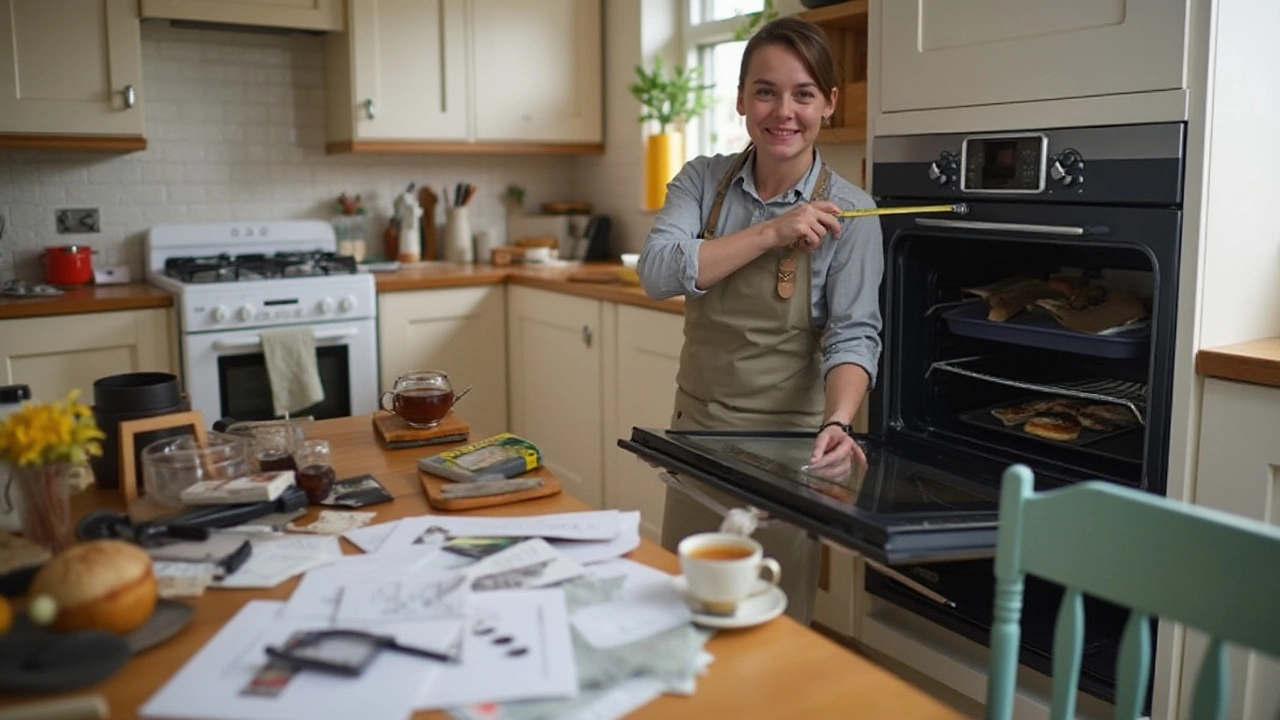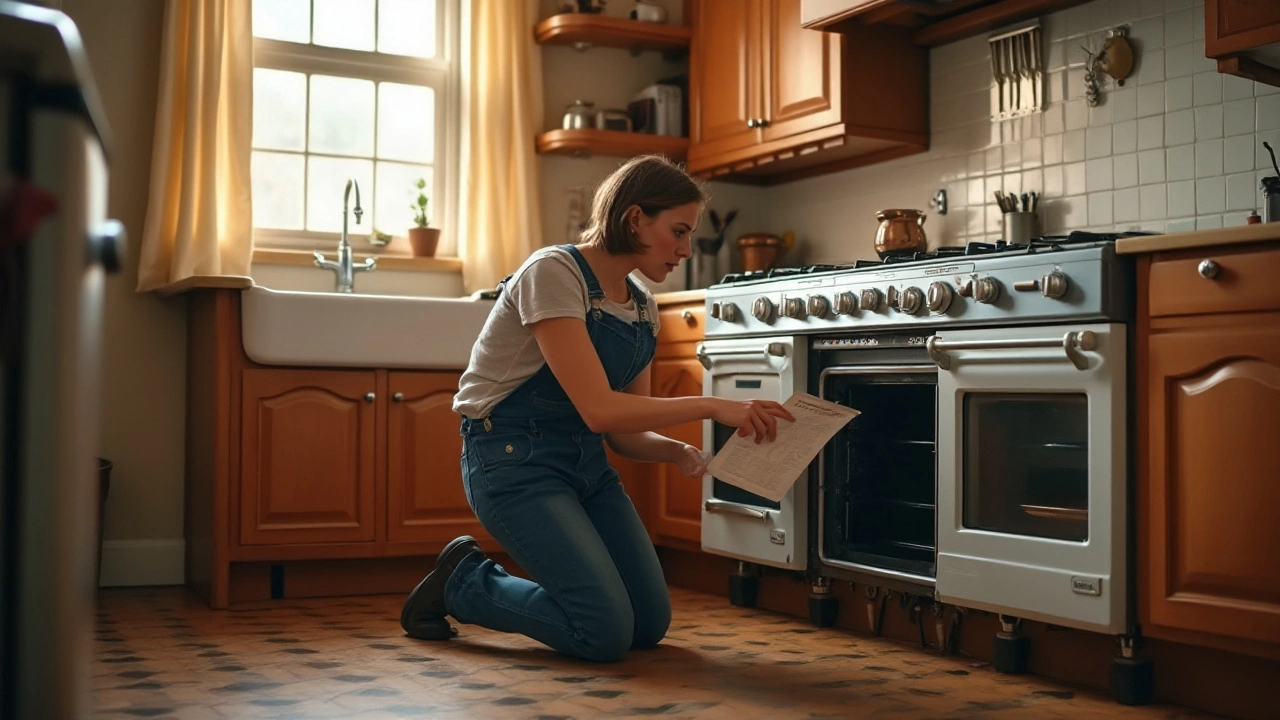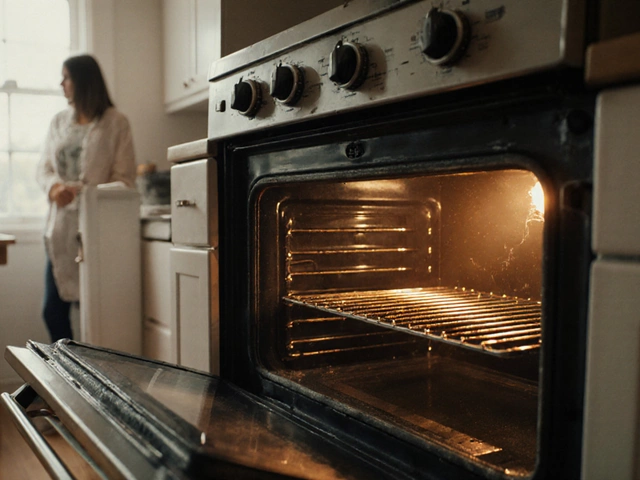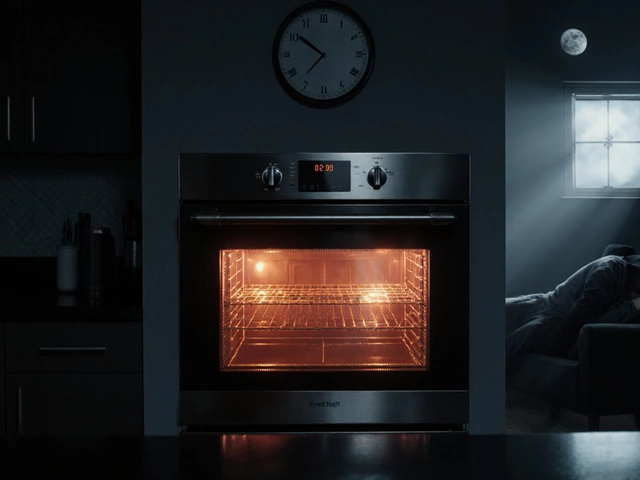When it comes to kitchen upgrades, replacing an electric oven is a project that might raise some eyebrows and a few nervous questions. Concerns about electrical connections and fitting the perfect design into your kitchen layout are understandable. However, with a bit of preparation and understanding, the task becomes more manageable than you might think.
Knowing when and why to replace your oven is a good starting point. Whether you're dealing with an outdated model that's given its all or simply wanting an upgrade to fit your latest culinary adventures, the reasons for replacement can vary. It's about making the right choice for your daily needs and your kitchen's unique character.
This guide will walk you through essential steps, from picking the right oven to ensuring safety during installation, making the process as stress-free as possible. By the end, you'll feel more confident in handling your oven replacement, all while ensuring you don't skip the vital safety considerations involved.
- Understanding Your Need for Replacement
- Choosing the Right Oven for Your Space
- Preparing for the Replacement Process
- Step-by-Step Replacement Guide
- Safety Tips and Considerations
Understanding Your Need for Replacement
The heart of the home, the kitchen, is where functionality meets comfort. But sometimes, appliances begin to falter, particularly the beloved oven. Knowing when it's time to consider a new electric oven replacement requires a blend of observation and knowledge. Have you noticed your meals are taking much longer to cook? Or perhaps there’s an inconsistent heat distribution causing frustration with undercooked or overbaked dishes? These could be signs that your oven is breaking down with age.
Modern ovens offer a range of features that can redefine your cooking experience. If your existing appliance is more than a decade old, its technology may be outdated compared to today's models, which promise energy efficiency, better insulation, and advanced cooking modes. Updating to a newer model could mean getting faster cooking times and improved energy efficiency, ultimately saving you time and cost over the long haul.
Another point to consider is safety. Aging appliances might carry risks such as electrical malfunctions, which can lead to more severe issues. Regular maintenance can mitigate some risks, but at some point, the cost of repairs may begin to exceed the value of investing in a new, reliable appliance. David Ludlow from Expert Reviews once said,
"While repairing an oven every few years might seem like the cheaper option, a new model potentially saves you power and stress."The newer designs often integrate smart technology, providing enhanced features like touch controls or app connectivity, which can significantly enhance your kitchen's productivity. So, it’s crucial to weigh these factors carefully.
Lastly, if your cooking habits have changed or you’re cooking for more people now, it might just be about wanting more out of a kitchen essential. Everyone’s needs shift over time, and what once might have sufficed may no longer be suitable. Before making any decisions, consider your regular cooking needs and future plans thoroughly. This isn't just about replacing an appliance, it's about enhancing the way you interact with your kitchen.
Choosing the Right Oven for Your Space
When you're poised to replace that tired old oven, the landscape of choices can seem as wide and varied as a good recipe book. Picking the right electric oven replacement is not just about finding the right fit for the space left by the previous unit, but also about embracing your cooking style and the modern features that can make life just a little easier. First things first, it's vital to measure your space precisely. The last thing you want is to bring in a shiny new model only to find it sticks out like an unwanted guest. Standard ovens are available in a variety of widths, commonly ranging from 60 cm to 90 cm, so grab your tape measure and note down not just width, but also height and depth.
Functionality is another big consideration. With today's innovations, you're not limited to just traditional methods. Do you often host large gatherings, or are you more of a swift weekday meal kind of chef? You might be drawn to convection ovens, which cook food more evenly and usually faster due to the fan that circulates hot air. On the other hand, some might prefer a double oven setup, providing the flexibility to cook multiple dishes at different temperatures simultaneously — quite the handy feature during those festive feasts. According to Consumer Reports,
"Investing in an oven that suits your cooking style can enhance your culinary experience significantly."
In terms of aesthetics, ovens today come in more styles and finishes than a fashion runway lineup. Stainless steel remains a popular choice for its modern look and durability, but black and white models can complement various kitchen decors beautifully. There's also the option of smart ovens, which can be controlled via smartphone apps and provide features such as pre-programmed recipes and voice activation. These features might sound like luxury, but they often become practical conveniences that redefine your cooking routine.
Beyond these considerations, energy efficiency should not be overlooked. With rising energy costs, an oven with a better energy rating can be friendlier to both your budget and the planet. Look at the energy consumption data – this is usually provided with the product details and can vary widely between models. Another factor could be the inclusion of features like self-cleaning capabilities, which use high temperatures to burn off spills and splatters, saving you the elbow grease. By taking these elements into account, you'll not only find an oven that will fit snugly into your kitchen space but will also serve your needs for years to come.
Then comes the decision of where to purchase your new appliance installation. Buying from reputable dealers gives you the peace of mind of warranties and after-service support. Always check customer reviews and possibly visit a showroom to have a tactile experience with the model you're considering. Seeing it in person can sometimes seal the deal, giving you that all-important gut feeling that this is the right choice.

Preparing for the Replacement Process
Starting the journey to replace your electric oven begins with methodical planning and a touch of care to avoid common pitfalls. This preparation stage is crucial as it sets the foundation for a smooth and successful installation. While tackling the task head-on might seem appealing, pausing to understand the requirements of your kitchen and your new appliance can save time and resources down the line. Preparation doesn't just involve the physical space, but includes understanding various specifications and ensuring safety throughout the process.
Firstly, consider your current setup. Measuring the available space where your new oven will sit is a vital step. Pull out the old oven, if it's still in place, and get precise measurements of both the width and height of the cavity. Jot these dimensions down because they will guide you in choosing the right fitting oven. Also, think about ventilation requirements. Modern electric oven replacement systems often require specific ventilation to ensure they function efficiently and safely without overheating.
Next up, it's time to tackle the old connections. Take a close look at how your current oven is wired. Most electric ovens require a dedicated circuit, often a 240-volt outlet, to safely power your new appliance. Make a note of the current configuration because it will inform any changes or upgrades needed during the replacement. Sometimes, having an electrician review your home’s electrical setup is a wise move, especially if it's an older property.
According to the Institute of Electrical and Electronics Engineers (IEEE), "safety is of paramount importance when dealing with electrical appliance installations, thus professional guidance can often prevent undue risks." This underscores the importance of having knowledgeable support during electrical considerations.
Don’t forget to prepare tools and materials needed for the swap. A toolkit with basic implements like screwdrivers, wrenches, wire cutters, and a voltage tester is essential. Having these tools at hand ensures you aren’t hindered by minor obstacles. You might need additional supplies such as mounting brackets or trim for a snug fit, so get these ready according to your oven's model specifications.
Preparing for the oven repair tips stage also means understanding any additional features your chosen model might require. Check the user manual or manufacturer's guidelines for any special instructions related to installation. Some models might come with digital interfaces or Wi-Fi capabilities, necessitating attention to connectivity settings during installation. Advanced features bring convenience but can complicate the setup without prior understanding.
Plan for Disposal and Delivery
Consider the logistics: What will you do with the old appliance? Many suppliers offer services to remove the existing oven while delivering the new one. Coordinating this can be a lifesaver, clearing your workspace and reducing hassle after the installation. Also, confirm that the pathway from delivery point to kitchen is clear of obstructions. This ensures that when your new oven arrives, it's a straightforward journey to its intended location.
So, giving thought to these elements significantly simplifies replacing your electric oven. Armed with measurements, the right tools, and a clear understanding of electrical requirements, you're almost ready to bring new life to your beloved kitchen space. Remember that preparation isn't just a step; it's a crucial part of home improvement success and safety.
Step-by-Step Replacement Guide
Embarking on the journey of replacing your electric oven can feel like diving into uncharted waters. But with the right map in front of you, this adventure is more accessible than you might imagine. First things first, ensuring your workspace is safe is paramount. Start by switching off the power supply at the main electrical panel to avoid any risks of electrical shock.
So, you’ve prepared for safety, and now it’s time to remove your old appliance. Carefully detach it from its current spot, unscrewing any fixtures that secure it to the cabinetry. Lift the old oven out, making sure to have an extra set of hands around. This step may call for some old-fashioned muscle, as ovens tend to be heavy.
Next up is preparing for the new oven's arrival, the thrilling yet sometimes nerve-wracking part of the process. Measure the open space to ensure it will accommodate the precise size of your chosen new oven. Oven repair tips suggest it's wise to double-check these dimensions; you don't want surprises on installation day.
Installing the New Appliance
Now onto the heart of the matter—installing your new appliance. It’s essential to consider how the new oven harmonizes with your existing kitchen layout. Is the color scheme aligned, the design cohesive? Fit the oven into place, ensuring it aligns seamlessly with the cabinetry, enhancing the aesthetics of your culinary centerpiece.
Once positioned, move to connect the electrical supply. If your new appliance requires a different configuration than the old one, and you’re not experienced in wiring, this is the moment to call in a professional electrician. Safety cannot be stressed enough in matters involving electricity.
"Electrical safety should never be taken lightly," says John Peters, a senior appliance technician. "When in doubt, call an expert to avert potential risks."
Testing Your Installation
The installation culminates with a crucial final step: testing. Restore the power at the main switch and turn on the oven. Check all functions, from the oven light to the temperature control, to assure everything runs smoothly. If possible, bake a small dish as a test run. Appliance installation experts often recommend this as the ultimate assurance of successful installation.
And just like that, your replacement journey concludes with the satisfaction of a job well done. Sometimes, the simplest improvements can offer the greatest rewards. As you gaze at your new oven fitting snugly in its place, you’ll know that every step was worth the effort, transforming not just your kitchen's face, but your cooking experience as well.

Safety Tips and Considerations
Replacing an electric oven is not merely a task of swapping out old for new. It involves a multitude of safety precautions that cannot be overstated. As you embark on this project, remember that dealing with electrical systems can pose significant risks, with electricity being the unseen force that powers many household disasters when not approached with respect and care. First and foremost, always turn off the power supply at the circuit breaker before you start any work. This precaution prevents the risk of electrical shock, a real and present danger. Electricity is unforgiving, and even a small amount of current passing through your body can be harmful or deadly.
Identifying and securing the right tools is also vital. Ensuring you have insulated tools is not just a good practice, it is a must. Tools designed for electrical work are tested to withstand high voltages, protecting you from accidental contact with live circuits. This preparation allows you to focus on the task without the constant worry of turning a mistake into an emergency. Additionally, it's always advisable to have a voltage tester. Before touching wires, always test them to ensure they are de-energized. A small tool, yet incredibly powerful, it detects electrical energy, potentially saving you from a severe mishap.
Understanding the Installation Manual
Another critical consideration is having your oven's installation manual on hand. Often, these documents come with step-by-step instructions written by engineers who designed the appliance. They offer valuable insights into specific safety protocols and requirements for your particular model. Do not rush through these instructions. A study by the Australian Bureau of Statistics showed that kitchen appliances account for a third of all household injuries, emphasizing the importance of taking heed of manufacturer guidelines. Following these guidelines ensures that the oven not only fits perfectly but functions safely over the years.
"Improper installation is the number one cause of appliance malfunction," mentions an expert from Consumer Reports. "Making sure everything is set up precisely as outlined minimizes chances of accidents or breakdowns."Having a second pair of hands is also prudent. Not only does it make the process easier, especially when handling bulky parts, but it also adds another layer of safety. Should something unexpected happen, an extra person can assist or call for help.
Post-Installation Checks
Once the new oven is in place, conducting thorough checks is not just appropriate, it is necessary. Ensure that the appliance sits firmly in its space without wobbling or gaps that might lead to heat dispersal issues. Ventilation is another critical aspect to verify. Improper ventilation can lead to overheating, affecting not only the appliance's efficiency but also its lifespan. Airflow helps maintain the internal components' temperature, safeguarding both the system and its surroundings from damage.
Finally, upon restoring power, pay attention to any unusual sounds or smells. Burning odors or electrical noises could signal wiring problems or defective components. These signs indicate that your newfound upgrade might need a professional's attention. A well-conducted installation isn't just about functionality—it embodies safety, efficiency, and long-term peace of mind in your daily cooking adventures.





